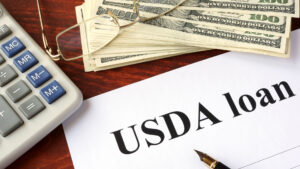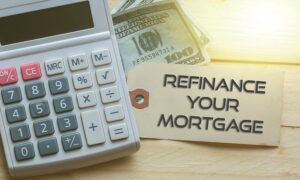
A fixed-rate mortgage (FRM) is a mortgage that does not change over the life of the loan. Most fixed-rate mortgages are fully-amortizing, which means the payment first covers the interest charge for the previous month, and then what’s left is used to reduce the principal balance. Every month, as the principal balance gets smaller, less of the payment is needed to cover the previous month’s interest, and more is allocated toward the principal reduction. At the end of the loan’s term, the balance is extinguished and the mortgage is paid in full.
Fixed-rate mortgages come in a variety of terms ranging from five to fifty years. The most common are: 10-year, 15-year and 30-year rates.

An Adjustable-Rate Mortgage (ARM) is a type of mortgage in which the interest rate applied on the outstanding balance varies throughout the life of the loan. With an adjustable-rate mortgage, the initial interest rate is fixed for a period of time. After this initial period of time, the interest rate resets periodically, at yearly or even monthly intervals. ARMs are also called variable-rate mortgages or floating mortgages.
The interest rate for ARMs is reset based on a benchmark or index, plus an additional spread called an ARM margin. Typically an ARM is expressed as two numbers. In most cases, the first number indicates the length of time the fixed-rate is applied to the loan.

An FHA loan is a mortgage issued by an FHA-approved lender and insured by the Federal Housing Administration (FHA). Designed for low-to-moderate-income borrowers, FHA loans require a lower minimum down payments and credit scores than many conventional loans.
As of 2020, you can borrow up to 96.5% of the value of a home with an FHA loan (meaning you’ll need to make a down payment of only 3.5%). You’ll need a credit score of at least 580 to qualify. If your credit score falls between 500 and 579, you can still get an FHA loan provided you can make a 10% down payment. With FHA loans, your down payment can come from savings, a financial gift from a family member or a grant for down-payment assistance.
All these factors make FHA loans popular with first-time homebuyers.

The VA Loan is a $0 down mortgage option available to Veterans, Service Members and select military spouses. VA loans are issued by private lenders, such as a mortgage company or bank, and guaranteed by the U.S. Department of Veterans Affairs (VA).
Today, the VA Mortgage is more important than ever. In recent years, lenders nationwide have tightened their lending requirements in the wake of the housing market collapse, making the VA Loan a lifeline for Veterans and active Military home buyers, many of whom find difficulty when faced with tough credit standards and down payment requirements.

With the USDA Guaranteed Rural Housing Loan program you have the opportunity to purchase a home in a designated rural area with no down payment. Contrary to the media myths and other sources there are special programs to allow folks to enter the opportunity of homeownership without a huge down payment and flexible credit requirements. One of the best-kept secrets available to millions of new homeowners is the USDA Rural Development home loan program.

A Home Renovation Loan gives homeowners access to funds needed to fix up their home. These renovation loans can come in the form of mortgages with built-in fixer-upper funding or personal loans.
You might consider getting one if you’re interested in buying a home at a lower price point and taking on the costs of fixing it up. Buyers choose to do this for a number of reasons, including personal pleasure or as a way to gain equity faster than they normally would when buying a move-in ready house, since you’re more in control of establishing the value of your house.
Home Renovation Loan may cover costs such as installing or updating heating and cooling systems, energy improvements, roofing, waterproofing, mold remediation, etc., in addition to desired renovations like a new kitchen or bathroom that could add value to the house.
A home-renovation loan is a type of loan, often wrapped into a mortgage loan, that includes the costs of renovating a “fixer-upper.”

A Jumbo Loan is a mortgage used to finance properties that are too expensive for a conventional conforming loan. The maximum amount for a conforming loan is $510,400 in most counties, as determined by the Federal Housing Finance Agency (FHFA). Homes that exceed the local conforming loan limit require a jumbo loan.
Also called non-conforming conventional mortgages, Jumbo Loans are considered riskier for lenders because these loans can’t be guaranteed by Fannie and Freddie, meaning the lender is not protected from losses if a borrower defaults. Jumbo loans are typically available with either a fixed interest rate or an adjustable rate, and they come with a variety of terms.

Refinancing works by giving a homeowner access to a new mortgage loan which replaces the existing one. The details of the new mortgage loan can be customized by the homeowner, include the new loan’s mortgage rate, loan length in years, and amount borrowed. Refinances can reduce a homeowner’s monthly mortgage payment, access cash for home improvements, and cancel mortgage insurance premiums, among other uses.
Refinance mortgages come in three varieties — rate-and-term, cash-out, and cash-in.
We’re a full service mortgage broker with an experienced staff offering expertise in every area of mortgage lending…from purchase to refinance to home improvement lending.
Copyright ©2023 Kwest Mortgage Group LLC
